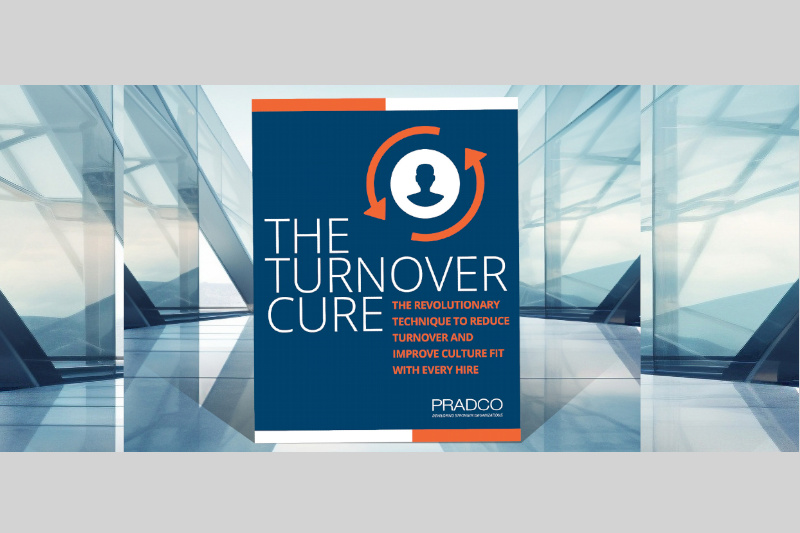
PRADCO | May 5, 2021 |
- Developing Leaders
- ·
- Performance Improvement Planning (PiP)
- ·
- PRADCO Assessments and Programs
How to Use Behavior & Personality Assessments for Recruiting
A defining feature of PRADCO assessments is the focus on job-related behaviors. We do this because they are relatively easy to observe and measure, there are proven tactics for changing or sustaining them, and they are easy to connect with organizational goals and results.
Contrast that with techniques that are more personality-based, and we are often asked if being focused on behaviors is “superior.” If behavioral approaches spotlight what someone does and personality approaches spotlight who someone is, does that make one more significant to effective assessment, coaching, and training than the other?
Our viewpoint is best summarized with a line we often share as part of any service we offer; a best-case scenario is having as many data points about a person as you possibly can. In other words, we recommend accounting for both behavior and personality wherever possible. We follow this practice ourselves, often integrating an assessment of someone’s “Work Style” into coaching or having a job candidate take a character evaluation as part of their pre-hire assessment.
But why? Why not focus on one over the other? Three real-time examples make our case for considering both behavior and personality when assessing and developing employees.
Exhibit A: Same Personality, Different Behavior
Two employees can have the same personality and engage in very different behaviors. Consider two employees that have an outgoing personality. Employee A is known by her colleagues for being outgoing, but very task focused. When she shows up at your door, she likely has an action item she needs your input on or a task for you to complete. Employee B is equally outgoing but tends to be relationship focused. When he shows up at your door, you may or may not be handling work at all, but you are likely to share weekend plans or reactions to current events at work or in the news. On a personality assessment, these candidates will score nearly identical, but on one of our behavioral assessments, you would see clear differences between the emphasis they give to things like work approach, interpersonal skills, and project management behaviors. Knowing your work environment and job demands, one of these candidates may be better suited than the other but you’d need the behavioral assessment to differentiate them.
We see this come up in our coaching programs quite a bit, as well. Someone seems to have the “right personality,” yet they are coming up short on results in a way that is holding them back in their career. The answer often lies in uncovering the behaviors they are spending too much time on or not enough time on.

Cut Turnover
with One Proven Technique
Discover what leading organizations are doing to solve turnover for good.
Exhibit B: Same Behavior, Different Personality
Of course, the reverse is also true. Two employees can exhibit the same behavior but have two very different personality types. For this example, assume that Employee A and Employee B are both high in driving results. Employee A has an outgoing personality, which means their efforts around getting productivity out of others are highly visible and therefore recognized by colleagues. Employee B puts equal emphasis on driving results, but as more of an introvert, they make a point of driving productivity behind closed doors or during one-on-one exchanges. You are likely to experience these two employees as very different people, despite the equal focus they are giving to this key behavior.
In our Personal Styles training, we work on cultivating versatility in people by getting them to recognize this very thing. An “expressive” personality might be trying to accomplish the same goal as an “analytical” personality, but their approach can make one person look like they’re moving too fast and the other person look like they’re moving too slow. On a behavioral assessment, they would score much the same, but on a personality assessment, their differences would be clear.
Exhibit C: The Complex Job Candidate
Which brings us to a third consideration. More than ever, employees are being asked to apply different “personalities” or sets of behaviors to different situations. Employee A is now expected to be a “driver” with her direct reports, an “amiable” in client-facing settings, and an “analytical” when considering expenditures. She’s also likely being asked to drive results in some settings while being accommodating in other settings and mediating conflict in still other settings. Employee B is being assessed for a job that is completely different than their current occupation, such as a student applying for their first job out of school or an independent consultant who is applying to join a large corporation. Their present behavior and personality may be somewhat different than the behaviors and personality they would exhibit on the job. For both these employees, personality and behavioral assessments can be used in tandem to assess for “meta-competencies” that cut across work contexts, such as versatility, flexibility, and learning agility.
Multifaceted People Demand a Multifaceted Solution
A point of pride for us at PRADCO is our core belief that there’s no one “type” or “category” of employee who can fit with a job, develop as a leader, or benefit from training to the exclusion of all other types. The world of work is simply not that simple, and for us to be effective partners with you as you manage your most important resource – people – our solutions need to meet the moment with an equal respect for who people are, what they do, and how they blend to create the results you are looking to achieve.

Cut Turnover
with One Proven Technique
Discover what leading organizations are doing to solve turnover for good.

